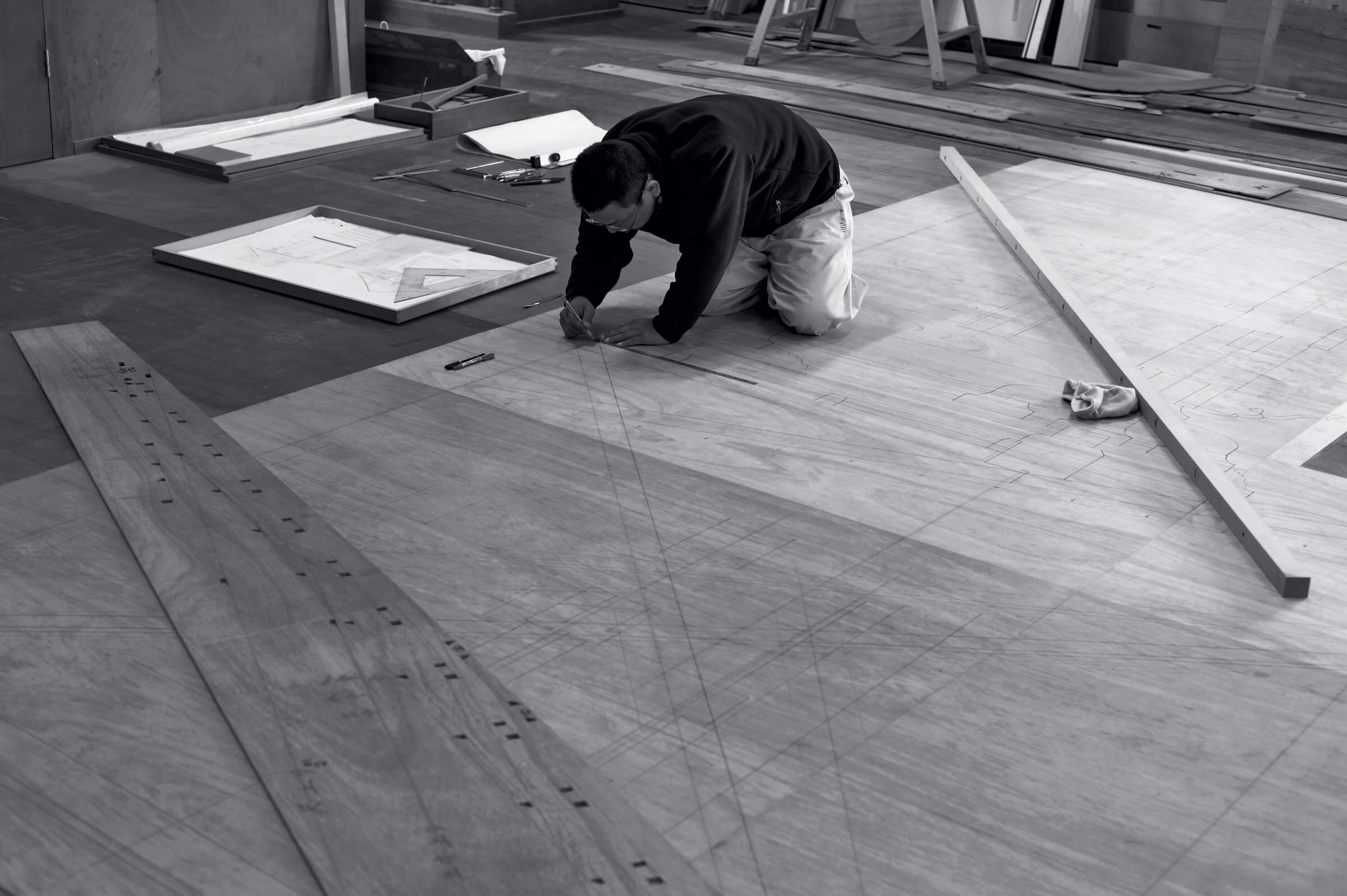This spring, New York’s Japan Society will celebrate the 50th anniversary of its landmark building, designed by Junzo Yoshimura, with a new exhibition: When Practice Becomes Form: Carpentry Tools from Japan. The show will commemorate the master craft of traditional Japanese carpentry with a multimedia exhibit exploring various design processes. Like the seminal 1969 Harald Szeemann exhibition at Bern Kunsthalle, When Attitudes Become Form, Japan Society’s show also attempts to unify historical and modern aesthetics through architecture, art, and curatorial techniques. The exhibit will stage various pieces from the Takenaka Carpentry Tools Museum in Kobe, Japan, in an installation conceived by Japanese contemporary architect Sou Fujimoto and Brooklyn-based collaborator Popular Architecture (POPA).
When Practice Becomes Form frames the process of designing with traditional Japanese carpentry tools, which are to be viewed as an extension of the carpenter’s hand. The carpenters using these tools are not solely constructors but are also artisans. The tools reflect the scores of specialized techniques traditional Japanese carpenters use when turning timber into buildings and the sensitivity these artisans bring to their materials and craft. Integral to the methodology of these tōryo, or framing masters, is environmental knowledge and the use of locally sourced materials. These concerns suggest a sort of sustainability rarely seen in modern construction. The wood in the designs shown here is intended to be compounded and reused by successive generations. Fujimoto’s installation aims to present a dialogue between 2D drawings and 3D models and create a striking visual transition between the two formats.

Yukie Kamiya, Japan Society’s Gallery Director, said that even the opening date of the exhibition, March 11, 2021, intends to highlight sustainable and multi-generational building practices.
“Ten years ago,” Kamiya said, “the big earthquake happened—the Tōhoku, Japan, earthquake and tsunami of March 11, 2011. [The disaster has shown how] Japanese carpenters and craftsmen recover land year by year, century by century, and then maintain it to build.”
The woodworking techniques in the exhibition were used by master carpenters of the 7th century. Their construction knowledge was shared with succeeding generations so that craftspeople could repair or partially deconstruct historic structures.

Kamiya said that, “Junzo Yoshimura, as a visionary modernist architect, was inspired by Japanese craftmanship and carpentry and combined that with modernist architecture ideas in his design. Our building is really the blend of the traditional design motif, but the steel, glass, and concrete are modern materials. It’s kind of the meeting place or the connecting platform of past and present.”
When Practice Becomes Form: Carpentry Tools from Japan is set to run from March 11 to July 11 at the Japan Society, 333 East 47 Street, New York, New York between First and Second Avenues. Admission is $12, $10 for students and seniors, and free for children under 16 and society members. Admission will also be free on Friday nights from 6:00 p.m. to 9:00 p.m. Details can be found on the Japan Society website.











